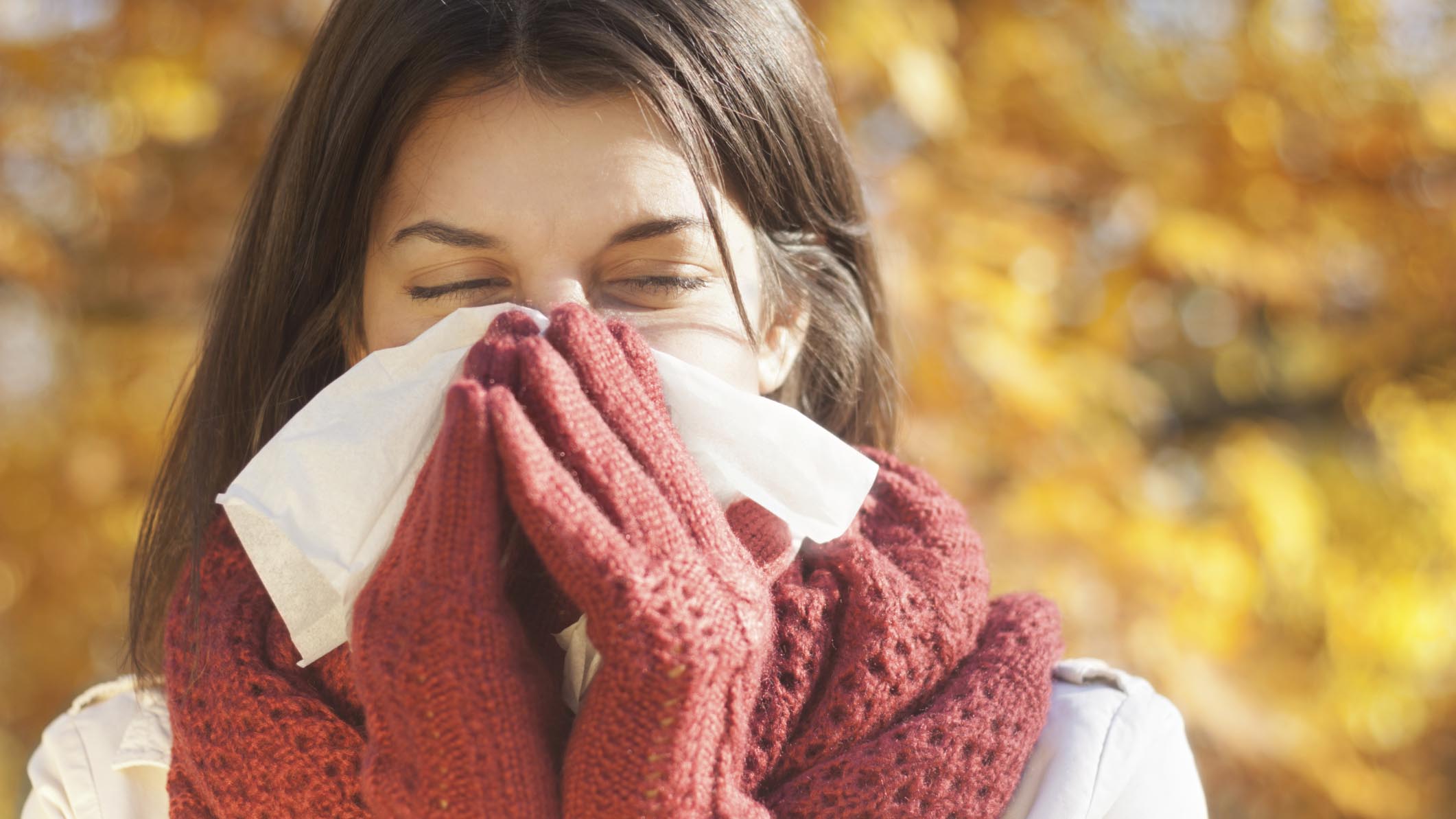Scientifically Speaking: What’s the Cold Got to Do with It?
 This month’s edition of Scientifically Speaking goes out to all the moms and dads who’ve warned their children throughout the years about exposure to the cold winter weather, which will inevitably lead to “catching a cold,” right?
This month’s edition of Scientifically Speaking goes out to all the moms and dads who’ve warned their children throughout the years about exposure to the cold winter weather, which will inevitably lead to “catching a cold,” right?
Seriously though, as I’ve gotten older, I’ve started to wonder if my mom was just duping me the whole time. Both a cold and the flu are caused by viral infections, so what in the heck does cold weather have to do with anything?
It looks like we’ve stumbled across a great topic for Scientifically Speaking. I did a little digging and — as always — got a few leads from our expert scientists. I’d like to say I’ve got a solid answer for you guys, but there seems to be some difference of opinion within the medical community. Let’s break down my findings, shall we?
Cold vs. Flu
Before we dive into all the cold weather talk, let’s discuss what a cold actually is. With more than 200 viruses causing it, the common cold is a viral infectious disease that usually leads to symptoms such as coughing, sore throat, runny nose, and sneezing.
The most common virus strands that cause a cold are rhinoviruses, and all of those nasty symptoms you experience are actually a result of your body’s immune response to the infection rather than the deterioration of tissue that the actual virus causes. In more extreme cases, the virus causing your cold can lead to viral or bacterial pneumonia.
The flu, or influenza, is also a respiratory infection, but it’s caused specifically by influenza viruses and usually leads to more severe symptoms such as fever, body aches, chills and headaches. There are three different types of flu viruses, all of which humans are susceptible to.
What the Experts Say
The National Institutes of Health uncovered some evidence that might back up your parent’s argument to keep warm during the winter season. These findings are specifically associated with the flu virus and its outer covering, or envelope.
The study showed that colder temperatures, near or below freezing, cause the flu virus to form a rubbery, gel-like covering that shields the virus, allowing for easier transfer from person to person. Once the virus enters the body, usually through mucus membranes in the mouth, nose or eyes, it reaches warmer temperatures in the respiratory tract and causes the covering to melt. The virus’ outer covering then reaches a liquid phase, allowing it to infect the cells of its new host.
 On the flip side, during warmer seasons the temperature is too high for the viral membrane to enter its gel state. Because of this, flu viruses often can’t withstand the elements and will dry out and weaken, leading to the end of “flu season.” This led the scientists to wonder whether people might better protect themselves against the flu by remaining indoors at warmer temperatures than usual.
On the flip side, during warmer seasons the temperature is too high for the viral membrane to enter its gel state. Because of this, flu viruses often can’t withstand the elements and will dry out and weaken, leading to the end of “flu season.” This led the scientists to wonder whether people might better protect themselves against the flu by remaining indoors at warmer temperatures than usual.
What the Other Experts Say
According to other experts, staying indoors might be the worst thing you can do for yourself throughout the winter. A leading theory is that confinement breeds infection.
“In winter, we spend more time indoors, in rooms that may not get a lot of circulation, giving us more opportunities to be exposed to respiratory viruses,” says William Schaffner, M.D., chairman of the department of preventive medicine at the Vanderbilt University School of Medicine in Nashville, in this Real Simple article.
Additionally, Schaffner adds, the winter air, inside and outside, also tends to be less humid, drying nasal passages and making them more vulnerable to viral invasion.
What You Can Do
These are only two opinions on the subject of winter sickness, but there’s a lot of information out there. Do some investigating yourself to see what the research tells us.
In the meantime, the best thing you can do to fight that winter virus is take preventative measures that support a healthy immune system. Evidence suggests that a healthy dose of both vitamin C and zinc may help. Deficiency in either of these may make individuals more susceptible to impaired immune response. Healthy adults generally need at least 75–90 mg of vitamin C and 8–11 mg of zinc per day to avoid severe deficiency.
Another important way to protect yourself from a virus is to avoid any kind of hand-to-face contact. Typically, a virus enters through hand-to-eye, -nose, or -mouth transmission. And of course, don’t forget to take the obvious precautions: healthy diet and exercise, sufficient amounts of sleep, disinfecting germ-susceptible areas, and regularly washing hands.
We’re proud to bring you the freshest content on the web! Follow USANA on Twitter, like our USANA Facebook page and enjoy the latest videos on the official USANA YouTube channel.
 Learn what USANA is doing to make the world a better place.
Learn what USANA is doing to make the world a better place.
The future of personalized health and nutrition is now available with USANA’s True Health Assessment.


Leave a Reply
Want to join the discussion?Feel free to contribute!